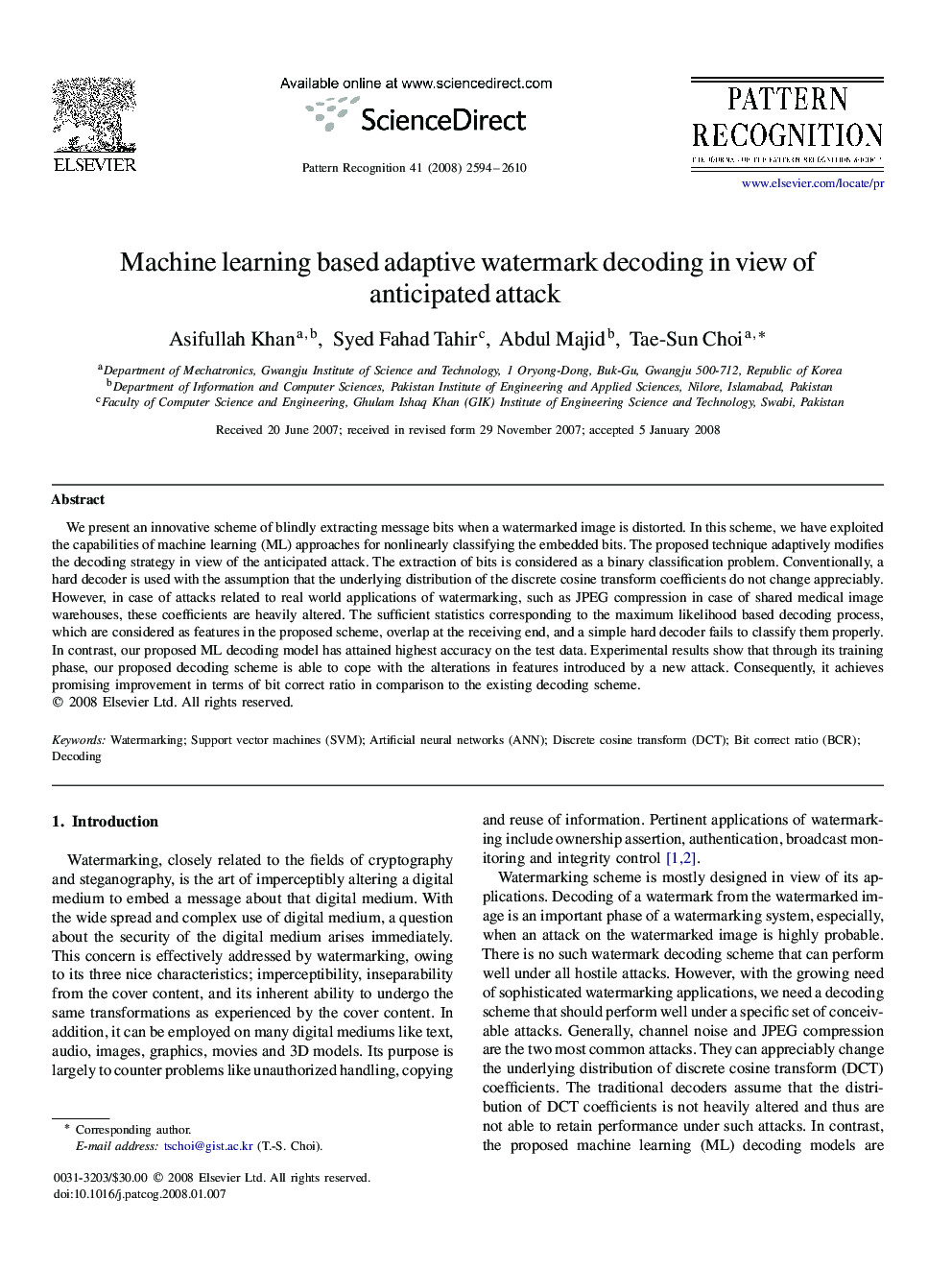| Article ID | Journal | Published Year | Pages | File Type |
|---|---|---|---|---|
| 531616 | Pattern Recognition | 2008 | 17 Pages |
We present an innovative scheme of blindly extracting message bits when a watermarked image is distorted. In this scheme, we have exploited the capabilities of machine learning (ML) approaches for nonlinearly classifying the embedded bits. The proposed technique adaptively modifies the decoding strategy in view of the anticipated attack. The extraction of bits is considered as a binary classification problem. Conventionally, a hard decoder is used with the assumption that the underlying distribution of the discrete cosine transform coefficients do not change appreciably. However, in case of attacks related to real world applications of watermarking, such as JPEG compression in case of shared medical image warehouses, these coefficients are heavily altered. The sufficient statistics corresponding to the maximum likelihood based decoding process, which are considered as features in the proposed scheme, overlap at the receiving end, and a simple hard decoder fails to classify them properly. In contrast, our proposed ML decoding model has attained highest accuracy on the test data. Experimental results show that through its training phase, our proposed decoding scheme is able to cope with the alterations in features introduced by a new attack. Consequently, it achieves promising improvement in terms of bit correct ratio in comparison to the existing decoding scheme.
